Netflix is doubling down on nostalgia
Nostalgia's been on trend for years now, but in 2024 the streaming service played into it further
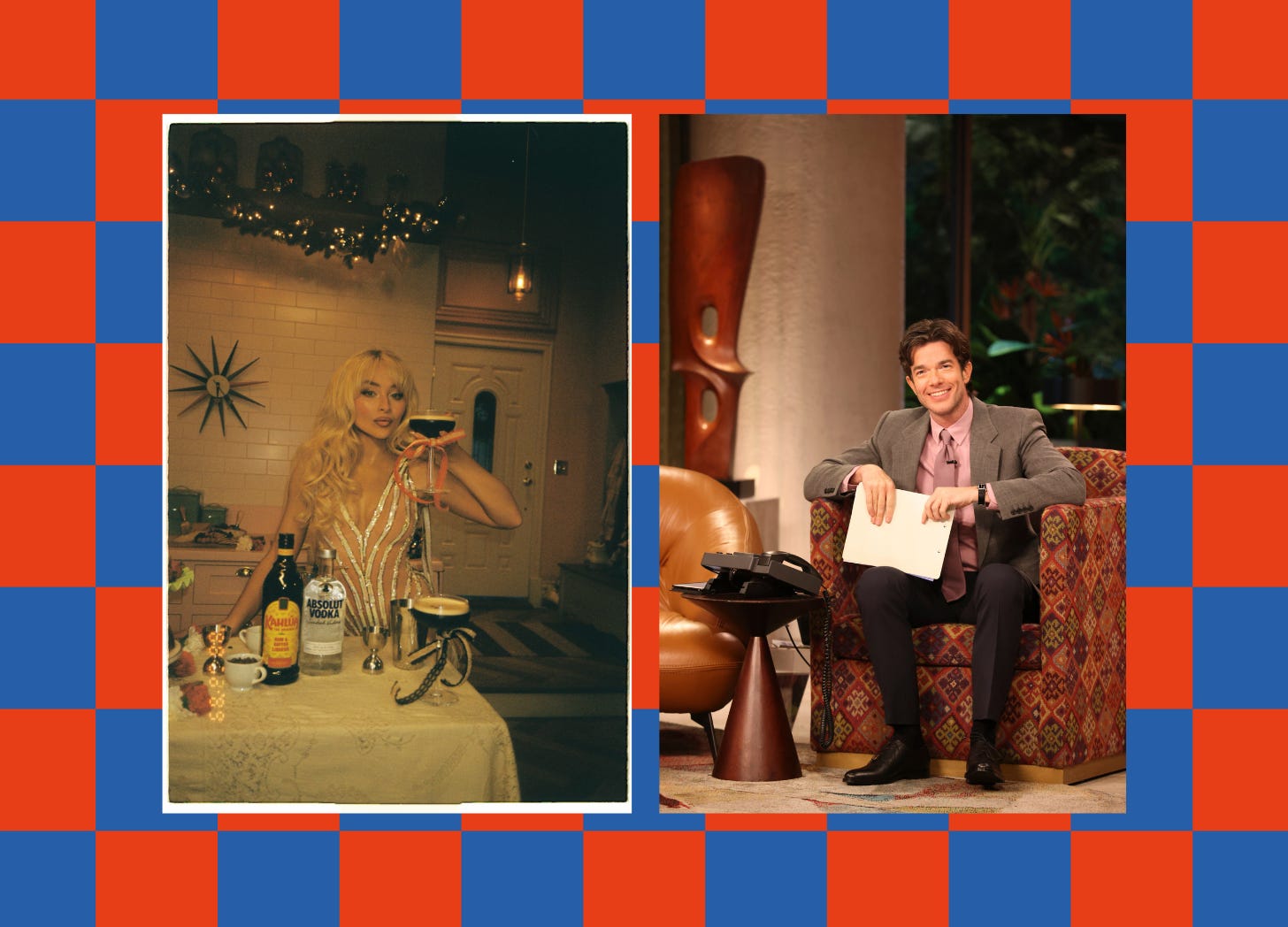
2024 was a disappointing year for television. I’m far from the first to say it, but it seems more clear than ever that the age of peak TV is over. It’s not that there’s nothing worth watching, but the days where the was a surfeit of wonderfully idiosyncratic shows to stream are behind us. It was a year of adjusting expectations.
One bright spot for me, though, was John Mulaney Presents: Everybody’s In LA. Consisting of just six episodes, the show was a pleasant mix of artfully produced field pieces with Angelenos, monologues about the peculiarity of Los Angeles, musical performances, and group interviews that mixed big-name comedians with niche Los Angeles figures, resulting in an unpredictable group chemistry without editability to smooth out the kinks. It had texture.
On first watch, the fact that it aired live (apart from the pre-taped field pieces) was central to its appeal for me. Aside from Sunday night HBO episodes, I hadn’t felt compelled to watch a TV show at any particular time in over a decade.
The first episode of Everybody’s in LA aired on a Friday, with a weekend break before airing the remaining five episodes the following Monday through Friday. After that Friday episode, I decided I’d do my best to be at home by 10pm every evening to watch as it aired. Its limited run made it an event. I didn’t make it home by 10pm on the dot all five nights, but if I got home at, say, 10:23pm, I’d flick it on mid-episode. Another thing I hadn’t done in years, save for hotel TV viewing.
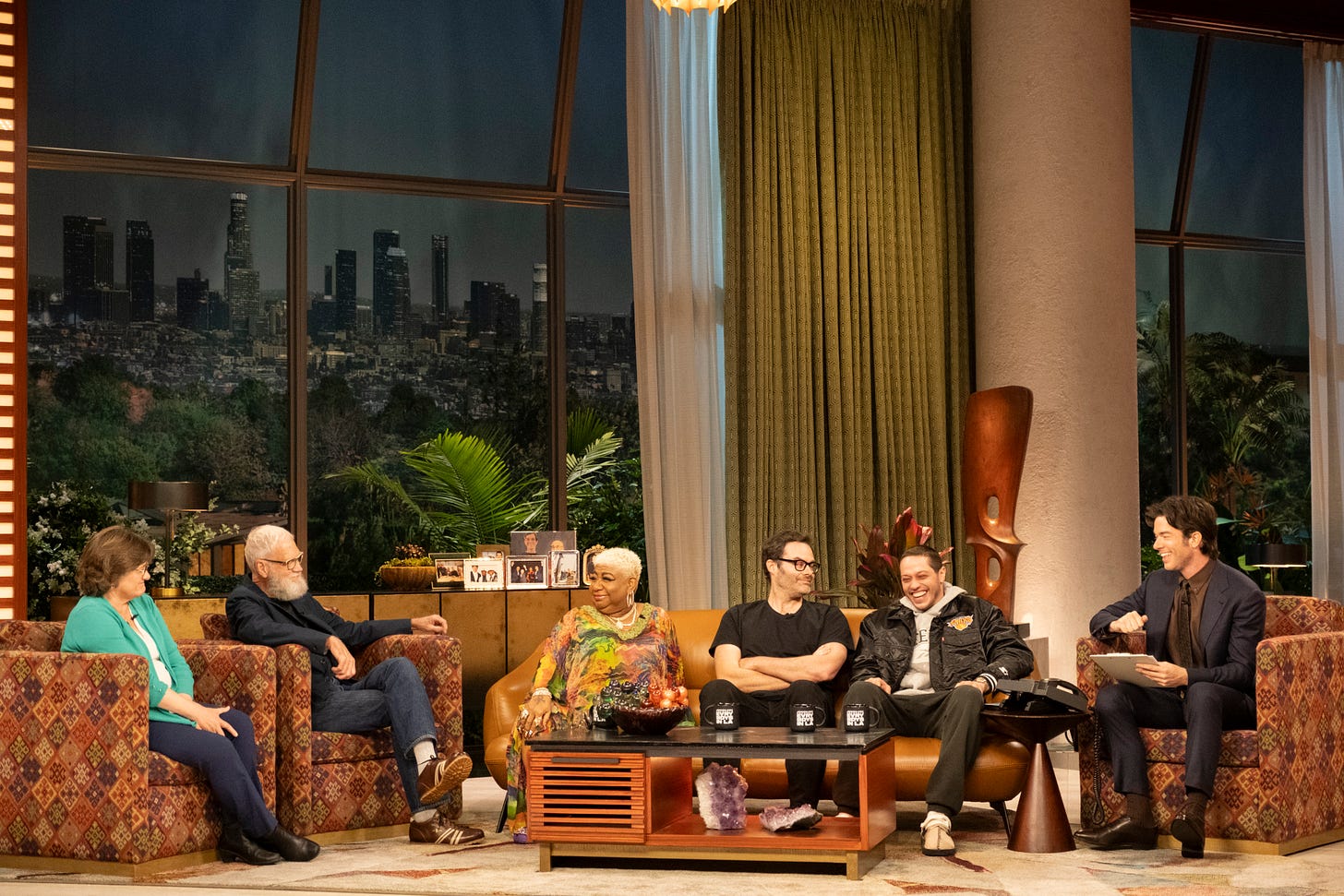
There was a nostalgic warmth to experiencing television like this for a week and the production design—intentionally or not—played up this connection to the past. The main set looks like a moody ‘70s home, with imposing brass doors that look quite like these ones that were designed by Billy Joe McCarrol and David Gillespie in 1971, a large sunburst wall sculpture, lots of wood details, and a chandelier that almost looks like this ‘70s Carlo Ponzio number (though it’s not an exact match). Even the mostly friendly fashion that Mulaney speaks to the delivery robot character, Saymo, felt of a different time—more ‘80s robot butler novelty than contemporary tech cynicism.
The show’s production designer Andrea Purcigliotti shared on Instagram that Mulaney wanted the set to “reflect the ‘dated warmth’ (his words) of Johnny Carson’s mansion design by Edward Niles1 in Malibu.”2 She also noted that the “performance space needed to emulate MTV Unplugged circa 1994.”
In an interview with Vanity Fair, Mulaney explained his intention for the set design further. “I knew I didn't want a shiny black floor. I didn't want anything chrome. I didn't want anything to look like late night or reality shows as they do now,” Mulaney said. “So I thought, what is missing on all these shows? And it's patterned furniture. With deep chairs. As a guest on many shows, I noticed the chairs are always a little shallow and a little firm, so that you sit up straight. I thought it'd be much more fun to have high armchairs that are a little deep. But yeah, I wasn't going for an off-putting aesthetic or anything. The set was actually modeled after Johnny Carson's house in Malibu. A lot of brutalist gold things, plus grapes. Glass grapes are wonderful.” (For those keeping track, the custom chairs appear to be upholstered in Schumacher’s Kilim Weave fabric.)
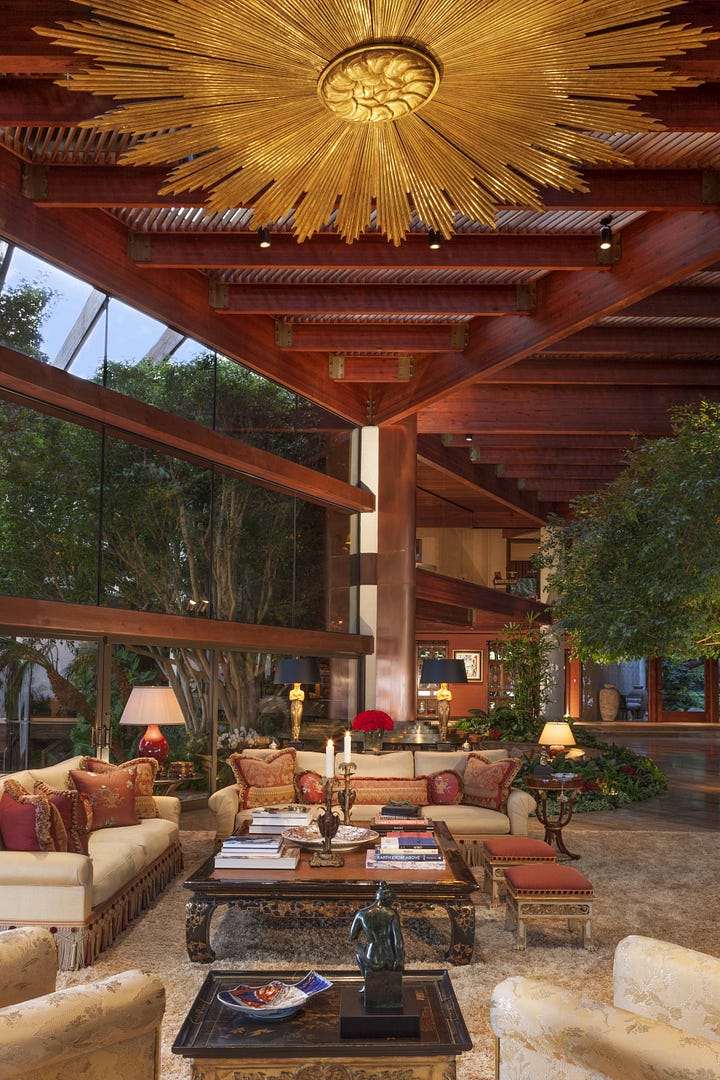
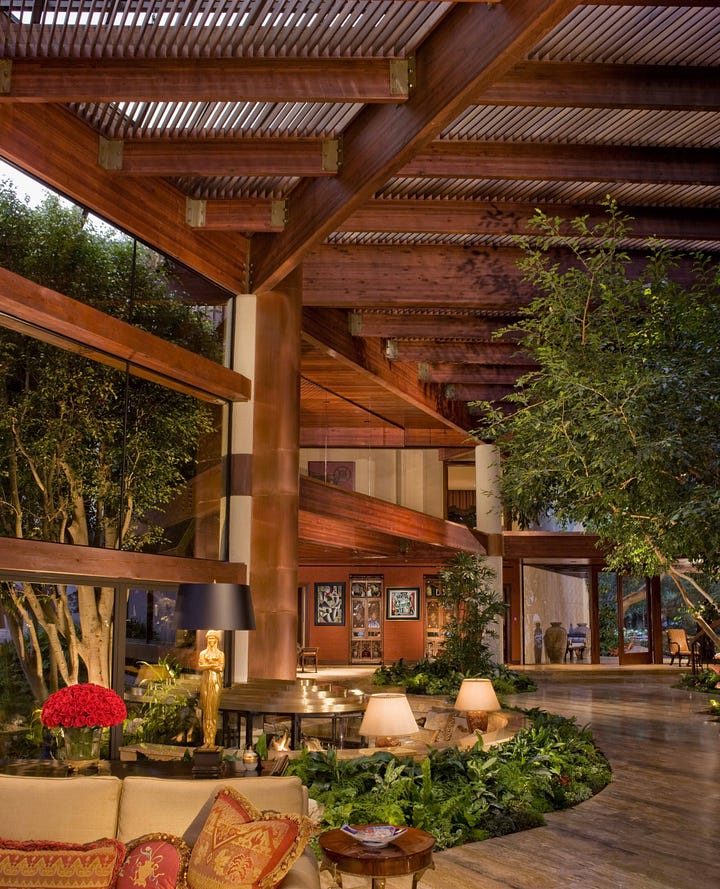
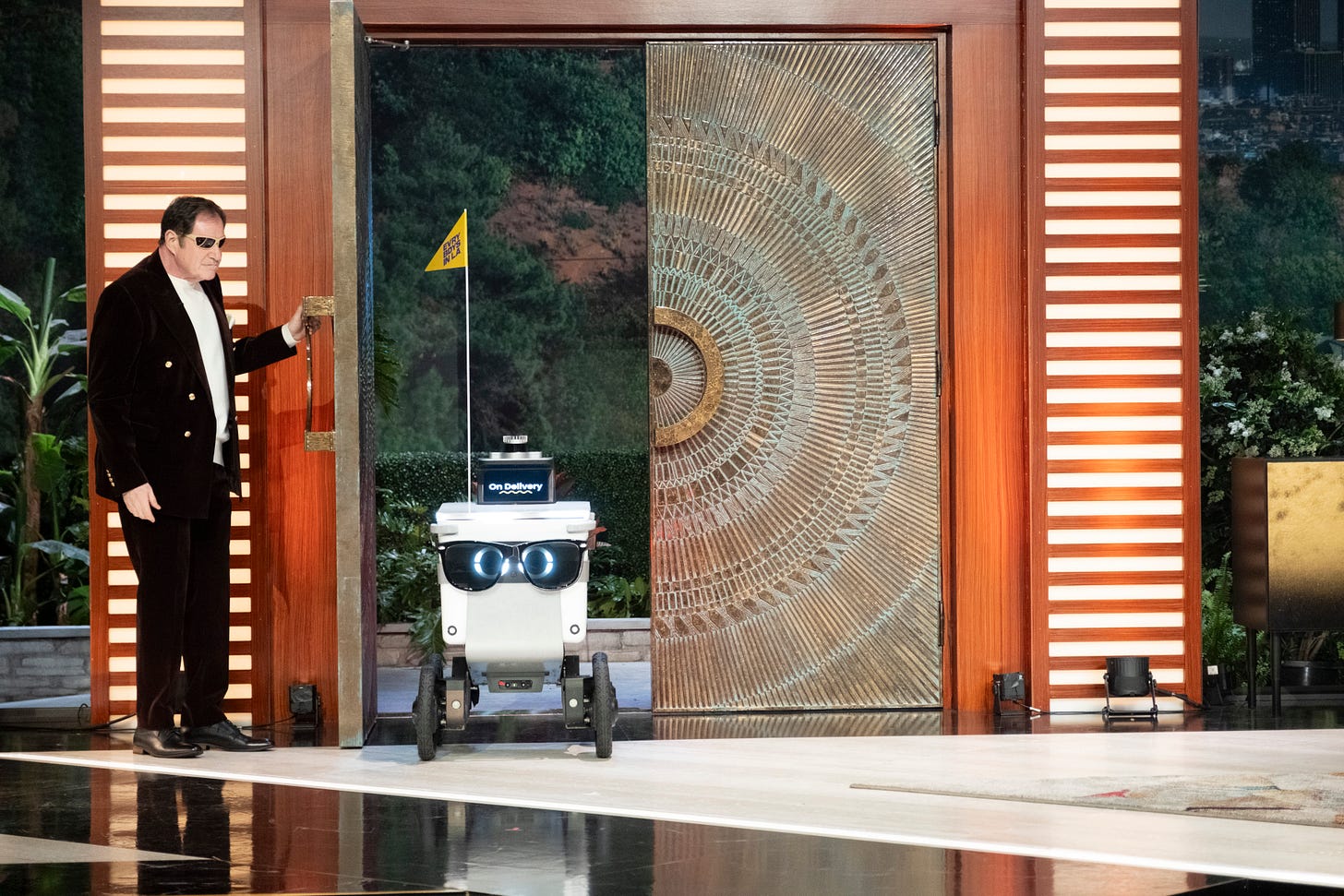
Ten years ago, Netflix might have emphasized the freshness of this show concept—because there are elements that feel quite new here—aesthetically, the show reaffirmed the sense of nostalgia that’s created by appointment viewing. (Ironically for the streaming service, this is the only time I’ve seriously wondered if I should get cable.) The ‘70sish production design is a natural progression for Mulaney who’s had a vintage, almost Borscht Belt appeal at early stages in his career, but is settling into a new phase and image post-divorce and sobriety.
2024 was Netflix’s big year of live programming, a venture that’s presumably a reaction to their stagnating subscriber base. In December, Sabrina Carpenter’s A Nonsense Christmas holiday special—a mix of comedic scenes and musical performances—debuted. It was released at a specific, viewer-friendly time on a Friday at 6pm PT, 9pm ET, clearly intended to draw a greater number of viewers than the typical 12 AM PT/3 AM ET drop time typical for Netflix Originals. Though it wasn’t aired live, it was mostly filmed in front of a live studio audience. This release strategy, blended with the shots of the crowd, lends itself to a similar, more communal viewing experience than a typical Netflix drop.
Like Mulaney, a vintage bent isn’t completely new for Carpenter’s image—in the 2022 video for “because I liked a boy” she was styled as an old school circus performer. But in 2024 she committed her entire image to this 20th century mishmash and catapulted to a new level of fame. (It’s hard to imagine her being photographed with a laptop for important imagery now, as she was for the cover of her 2022 album Emails I Can’t Send.)
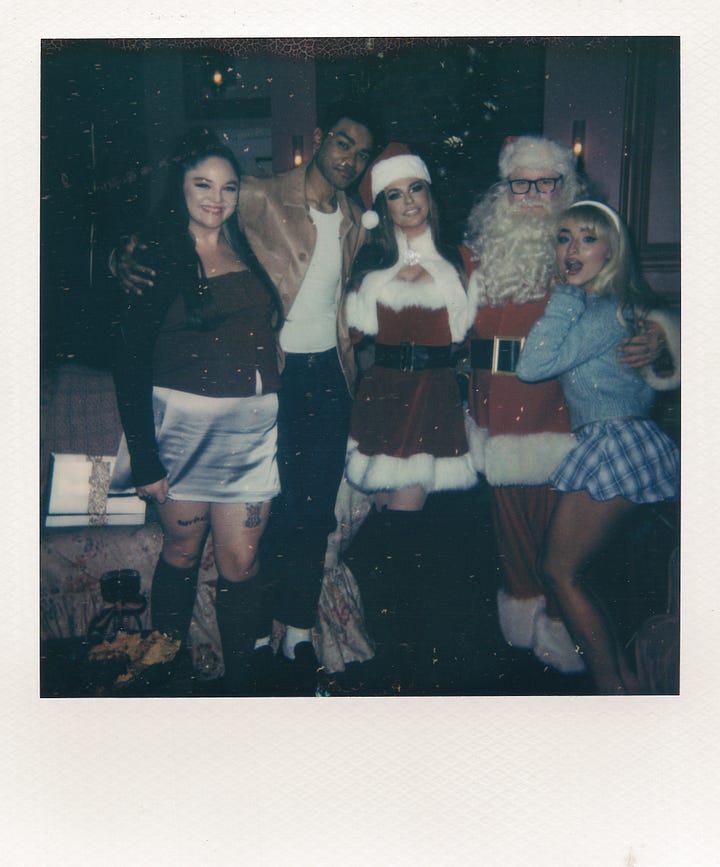
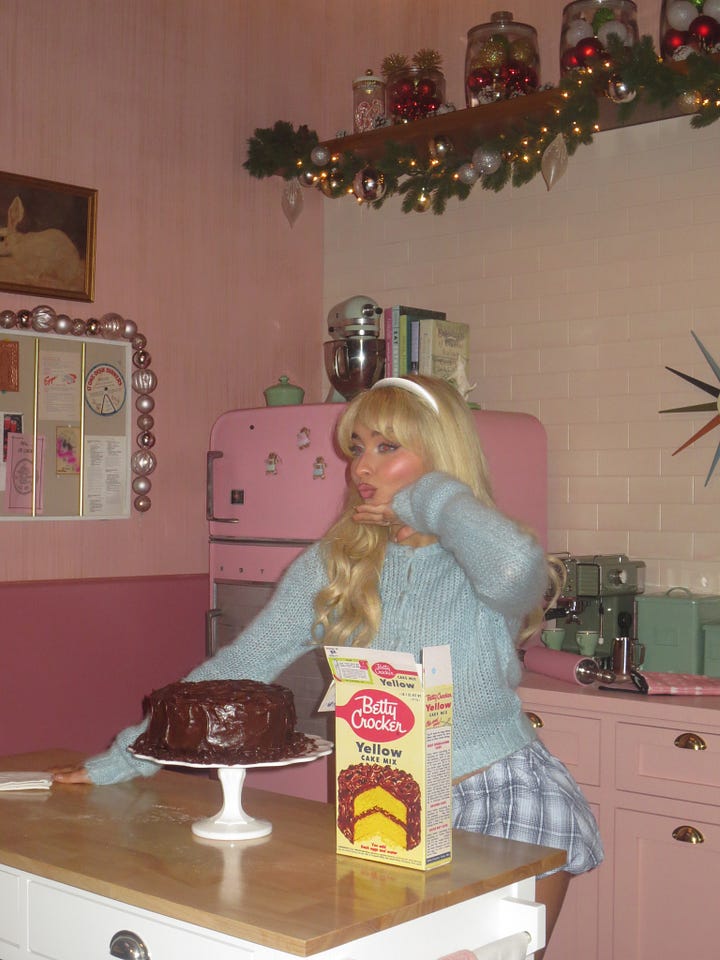
Carpenter’s image doesn’t stick to one particular decade’s sensibilities, though it all looks to be at least inspired by aesthetics that predate the year 2000. (She mostly skews ‘60s, I’d say—you can’t keep her away from a babydoll dress!) The production design for A Nonsense Christmas is no different. Some elements feel ‘50s, while others feel ‘70s, and later refashionings of the same space read more or less contemporary. (There’s a pink chair in particular I’m thinking of that reads very Wayfair’s-idea-of-midcentury-modern.)
A Nonsense Christmas called for two main sets—one, a home fit for a multi-cam sitcom and a more traditional stage that production designer Jason Sherwood wanted to look like a fantasy, according to The Hollywood Reporter. “We developed a creative vocabulary between the two worlds,” Sherwood told The OC Register. “There’s a moment in the special where we pan over to the television and zoom in on the TV, then we go into the TV, and then we’re doing a musical number. It became sort of this device to toggle between moments that felt grander and bigger and then moments that felt more intimate or more comedic.” Friends, A White Christmas, Gentlemen Prefer Blondes, and holiday specials like The Judy Garland Christmas Show and The Andy Williams Christmas Special TV Show were among the varied inspirations for the sets.
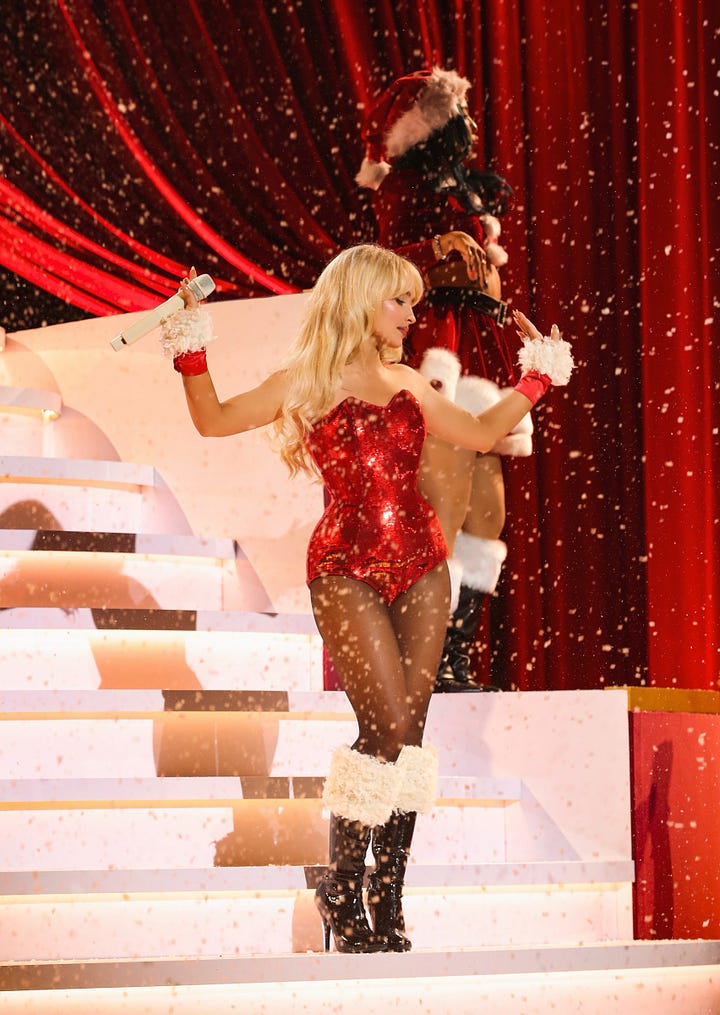
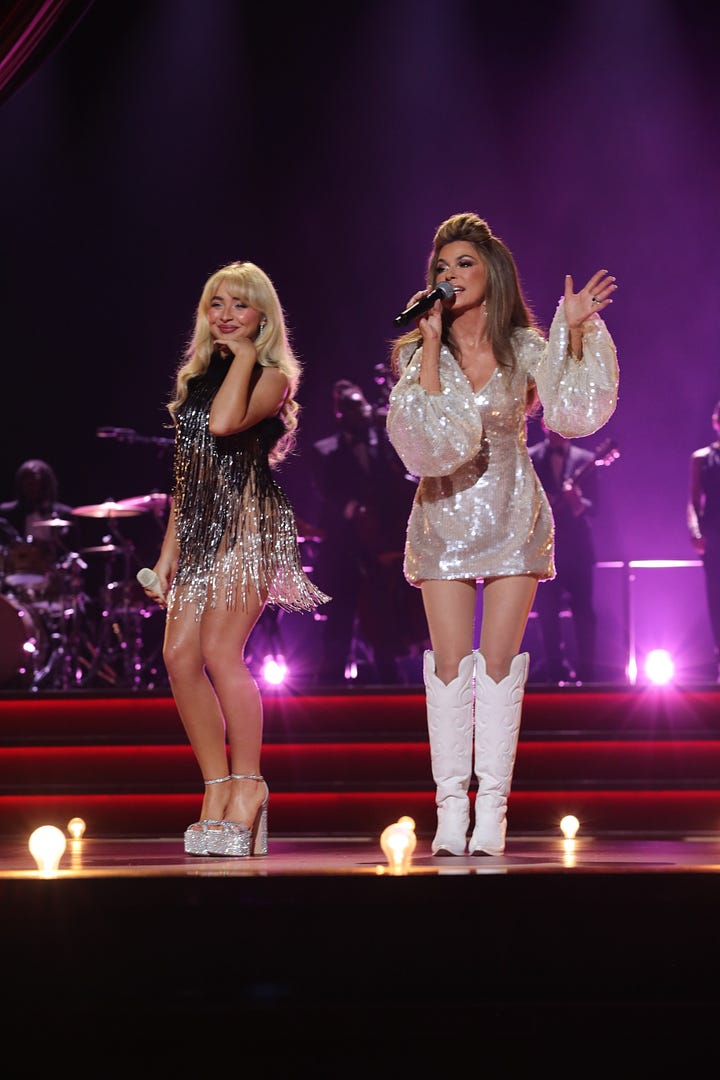
Prioritizing these release formats makes sense in a time when member’s clubs, massive stadium tours, and other cultural trends indicate consumer desire to be in community with one another. Watching Mulaney live, I felt like I was onto something, but that it was something I was discovering with other people—not in the dark recesses of some streaming site’s endless scroll. Even without live-tweeting, or texting a friend about it, or actually verbally acknowledging other viewers in any way, there’s a feeling of connectedness in watching things all at the same air time that just can’t be replicated with streaming episode drops.
I’m reminded of Gregg Bordowitz’s writing about listening to the radio in his ‘80s adolescence in Some Styles of Masculinity: “I didn’t mind the feeling of being at one with the masses. […] Everyone was tuned to the same station. Everyone was turning up the volume. I walked and listened to the entire song. I listened to everyone on the beach listening to the song, separately but together. For five minutes, “Emotional Rescue” was on the horizon.” We’re not going back to a true monoculture anytime soon, nor do I yearn for the period of network TV dominance, but formats that recreate certain elements of them can certainly be appealing.
Edward R. Niles designed a lot of wonderfully bizarro homes in Malibu. A home he renovated in 1977 would later host the wedding of Madonna and Sean Penn and this Malibu home that was featured in a Mr. Beast video. The Niles–designed Malibu home is not to be confused with Carson’s previous Malibu home, on Carbon Beach, which was published by AD in 1984.
The photos of Carson’s house available online are from the home’s listing in 2017, at which point the seller, Sidney Kimmel, had owned it for 10 years. Presumably they don’t reflect exactly how Carson himself lived in the home, though I suppose there’s a small chance that these images were retained from the 2007 listing and re-used because of the celeb cache. (Seems unlikely but you know what they say about assuming etc. etc.) I can't find any pictures online that are definitely from Carson's ownership, but I ordered a magazine online that miiight provide some. I'll post an update if I dig up more deets. In any case - I suppose these are possibility what the EILA team worked from since they’re what’s available online.





